A Sanitary Sensor is a device which measures temperature, flow or pressure in an environment where products will be for human consumption.
In typical industrial applications, measurements of parameters such as temperature, flow, level, or pressure simply involve finding a device with the right specifications that is designed to provide reasonable durability and a satisfactory life in its operating environment. The measurement range needed and special environmental concerns, such as exposure to corrosive liquids or gases help narrow down the choices. When these measurements involve products for human consumption, an additional set of requirements emerges. In this arena, product contamination can lead to product liability as well as harm to the end user. This is where 3-A sanitary standards come in. Unlike other types of standards, equipment displaying the 3-A Symbol has been shown to meet certain material, design and fabrication standards for cleanability and inspection.
Preventing Contamination
The sidebar shows just a few of the typical applications where sanitary sensors must be used in order to protect the end products from inadvertent contamination. As you can see, the range of products requiring sanitary processing is extensive, and we all use these products and benefit from the use of sanitary sensing devices. From a safety standpoint, besides functionality a key focus of sanitary sensor design is on maintaining sterility and avoiding contamination of the product. There are three key factors that contribute to meeting this goal; the exposed surface of the sensor, the mechanical design and installation methodology, and the ease which with the sensor can be thoroughly cleaned. Let's consider each of these issues.
APPLICATIONS FOR SANITARY SENSORS
Dairy Products: Milk, cheese, yogurt, ice cream
Food Products: Syrup, jam, sauces, soups, oils
Beverages: Soda, fruit juice, beer, water
Pharmaceutical Products: Medication, ointments, solutions
Cosmetics: Creams, lotions, lipstick
The Sensor Surface
Any consumable or applied product for which contamination must be avoided. The 3-A sanitary standards specify the required properties of a sensor surface in contact with the product. Contamination can occur from the process material clinging to the surface of the sensor and serving as a breeding ground for microbes. Consequently, contact surfaces must be very smooth, non-porous, and easily cleaned. In addition, it must be non-reactive and non-contaminating. Corrosion resistance is also very important since corrosion can lead to pitting where contamination can become imbedded.
Design And Installation
The mechanical configuration of the sensing device where it is exposed to the product being processed can introduce opportunities for contamination. To meet the 3-A standards, the sensor must be made from corrosion resistant materials, assembled using accepted processes and be designed with features that would not trap debris and encourage microbe growth. At the installation location, it is desirable to avoid or minimize stagnant zones in the fluid conduits where the product can be trapped and remain after the system is drained. In the case of products that are sticky or have high viscosity, these areas can be difficult to clean. Conduit offsets and T-connections necessary to install a sensor can lead to such stagnate zones.
Cleanability
For process efficiency, it is best to be able to wash out the system between runs without having to remove the sensors. This is called "cleaning in place" or CIP. Sensors that require manual cleaning and inspection add to turnaround time between batches and increase labor costs. This increased handling can also lead to increased risk of contamination.
Although we typically do not give it much thought, everyone who eats, drinks, takes medication or uses cosmetics is a beneficiary of the specialized sensing and measurement devices used in manufacturing these products. By combining our experience in sensor design & development, with new technology and industry leading product availability and support, OMEGA can be your source for leading edge sanitary sensing products that ensure the best possible outcome in any of these critical and important processes.
OMEGA Engineering offers a wide range of
sanitary sensors in Taiwan.



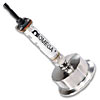

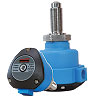
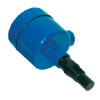
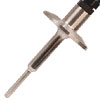
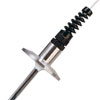
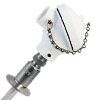
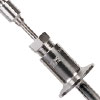
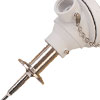
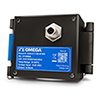

 Sensores Sanitários
Sensores Sanitários Sondes Sanitaires
Sondes Sanitaires Sensores Sanitarios
Sensores Sanitarios Sensores Sanitarios
Sensores Sanitarios Sanitary Sensors
Sanitary Sensors Sonde hygiénique
Sonde hygiénique Hygienegerechte Sensoren
Hygienegerechte Sensoren Sanitary Sensors
Sanitary Sensors Sanitary Sensors
Sanitary Sensors Sensores higiénicos
Sensores higiénicos Sanitary Sensors
Sanitary Sensors 卫生级传感器
卫生级传感器 Sanitary Sensors
Sanitary Sensors
 위생센서
위생센서 Sanitary Sensors
Sanitary Sensors
 Sanitary Sensors
Sanitary Sensors
 Sanitary Sensors
Sanitary Sensors
 Sanitary Sensors
Sanitary Sensors
 Sanitary Sensors
Sanitary Sensors